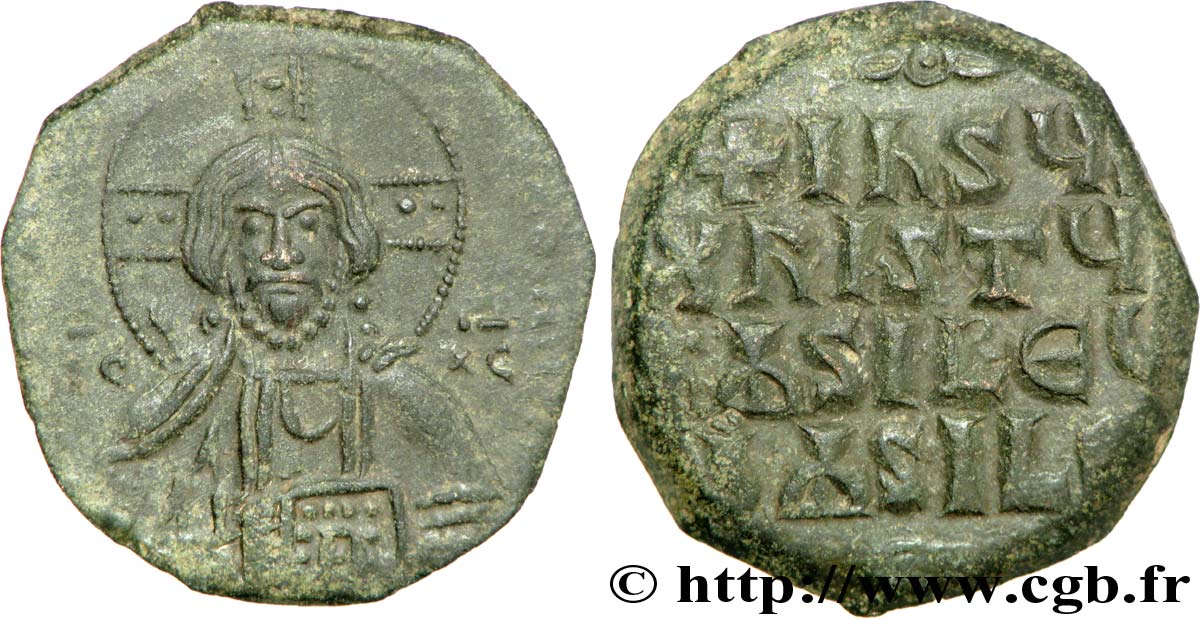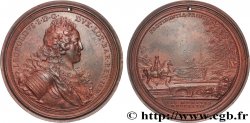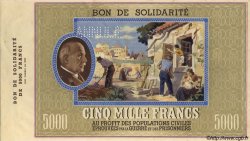v36_1190 - CONSTANTINUS VIII Follis
MONNAIES 36 (2008)
Startpreis : 120.00 €
Schätzung : 180.00 €
unverkauftes Los
Startpreis : 120.00 €
Schätzung : 180.00 €
unverkauftes Los
Type : Follis
Datum: c. 1025-1028
Name der Münzstätte / Stadt : Konstantinopel
Metall : Kupfer
Durchmesser : 26 mm
Stempelstellung : 6 h.
Gewicht : 9,23 g.
Kommentare zum Erhaltungszustand:
Exemplaire sur un flan quadrangulaire et irrégulier. Portrait de haut relief et de joli style. Lettres bien venues au revers. Servi par une jolie patine vert foncé de collection ancienne
N° im Nachschlagewerk :
Vorderseite
Titulatur der Vorderseite [+ EMMA - NOVHA]/ IC - XC.
Beschreibung Vorderseite Buste du Christ Antiphonetes debout de face, avec le globe crucigère, vêtu du pallium et du colombium, bénissant de la main droite et tenant les Évangiles de la gauche.
Übersetzung der Vorderseite (Dieu avec nous).
Rückseite
Titulatur der Rückseite + IHSU[S]/ XRISTY[S] /BASILEU/ BASILE'.
Beschreibung Rückseite en quatre lignes surmontées d'un ornement.
Übersetzung der Rückseite (Jésus-Christ roi des rois).
Kommentare
Imitation. Classe A2/A3. Le nimbe crucigère est orné de deux globules superposés verticalement. Les Évangiles sont richement ornés d’un motif décoratif en forme de porte. Rinceau à l’exergue du revers. Ce type est attribué à Constantin VIII seul après 1025 et la mort de Basile II . Épigraphie très élégante avec des A en forme d’oméga barré. Type classé dans les imitations par Philip Grierson avec un style très particulier.
Imitation. Class A2/A3. The cruciform nimbus is decorated with two vertically superimposed globules. The Gospels are richly decorated with a decorative motif in the form of a door. Rinceau in the exergue on the reverse. This type is attributed to Constantine VIII alone after 1025 and the death of Basil II. Very elegant epigraphy with A's in the form of a barred omega. Type classified in imitations by Philip Grierson with a very particular style
Imitation. Class A2/A3. The cruciform nimbus is decorated with two vertically superimposed globules. The Gospels are richly decorated with a decorative motif in the form of a door. Rinceau in the exergue on the reverse. This type is attributed to Constantine VIII alone after 1025 and the death of Basil II. Very elegant epigraphy with A's in the form of a barred omega. Type classified in imitations by Philip Grierson with a very particular style








 Berichten über einen Fehler
Berichten über einen Fehler Die Seite drucken
Die Seite drucken Teilen meiner Auswahl
Teilen meiner Auswahl Stellen Sie eine Frage
Stellen Sie eine Frage Einlieferung/Verkauf
Einlieferung/Verkauf
 Details
Details








